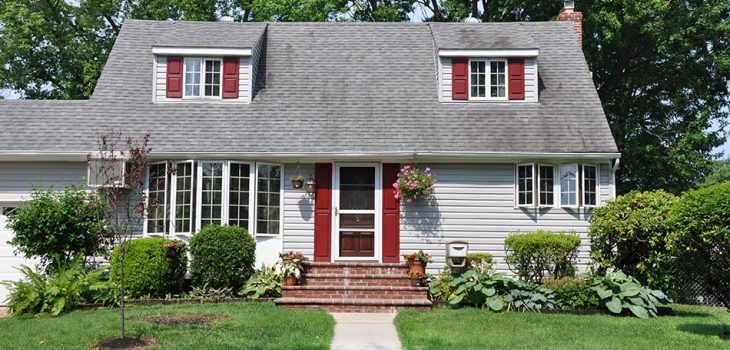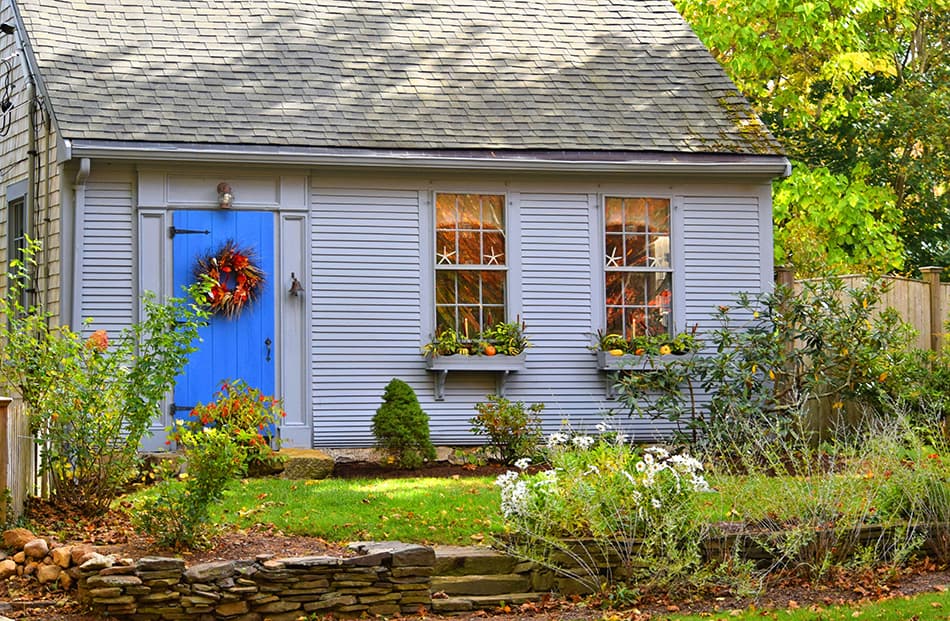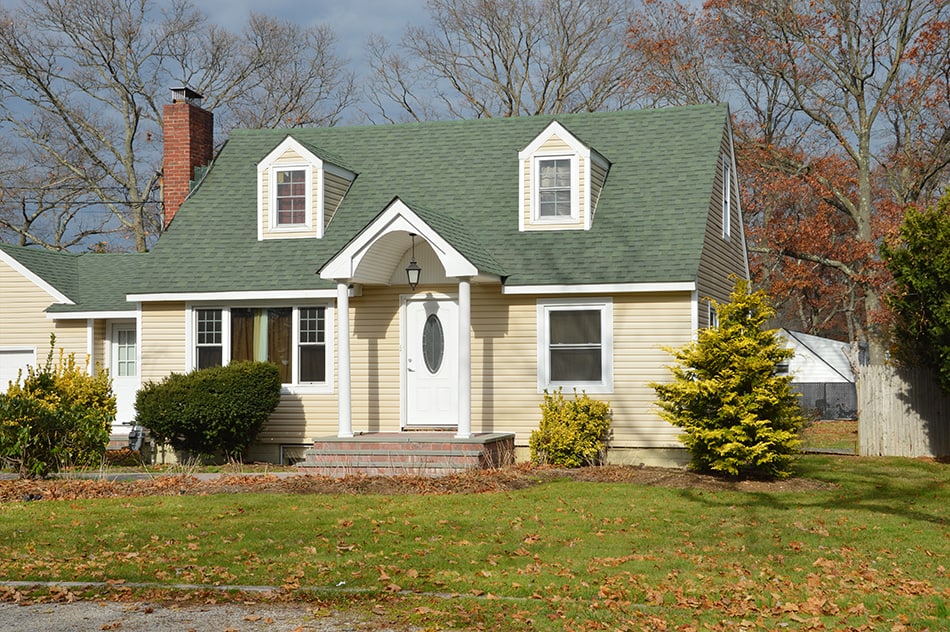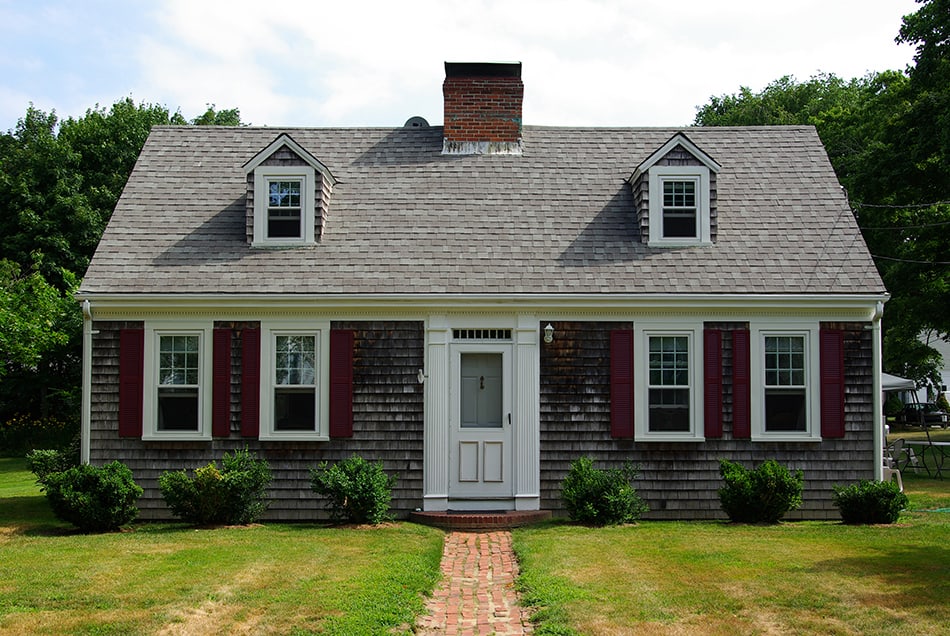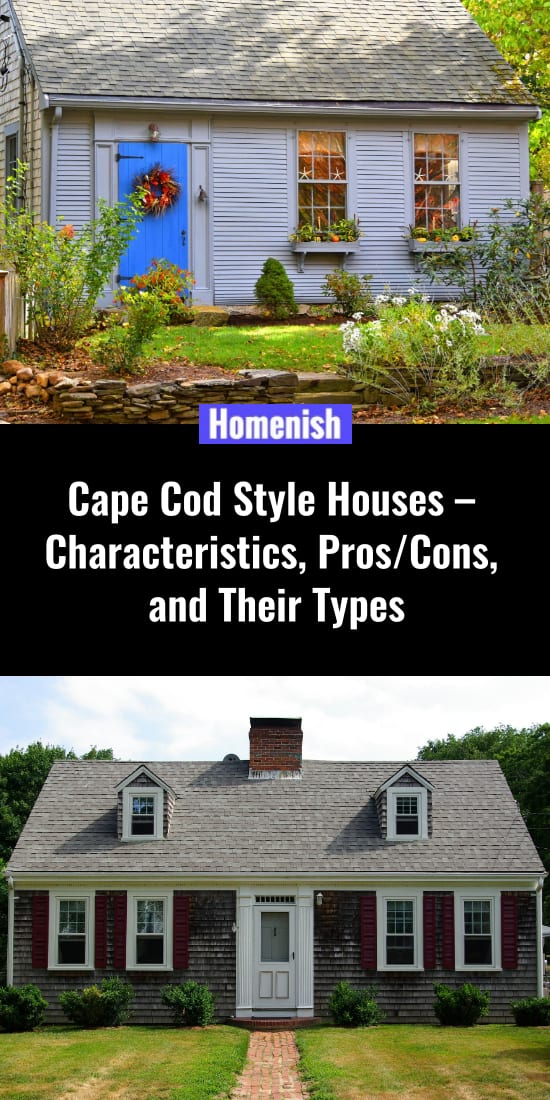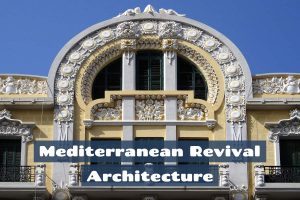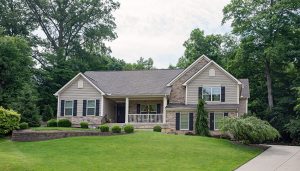One of the most beloved home architectural designs in the US is the Cape Cod style house. You may have seen hundreds of Cape Cod homes dotted around seaside towns of New England and Massachusetts. The style is a very simple one; a rectangular shaped house with gable pitched roof. Cape Cod homes rarely have decorative features or a porch as they were designed for practical reasons rather than appearance. These homes have low ceilings and a huge central chimney to keep the occupants warm during the cold winters of the north. Cape Cod homes are still popular to this day as simple and efficient starter homes for small families or veterans.
Curious to know more about Cape Cod style houses and their history? Here you’ll learn all about this style home, its defining characteristics, advantages and drawbacks as well as the most common types of Cape Cod style Houses.
A Quick History of Cape Cod Style House
Cape Cod houses originate in New England from the late 17th century to the end of the 19th century. These homes were built with complete practicality, affordability, and efficiency in mind. The second wave of Cape Cod Revival began during the 1920s until the end of World War II, which further spread the popularity of this style home in the US, especially for the returning soldiers who needed economical housing. Cape Cod style homes were the solution to the post-war housing shortage. They were later replaced by the more ornately decorated Georgian & Victorian homes at the start of the 20th century.
Characteristics of Cape Cod Style House
- 1 and a half stories, not 2: although some people would say a Cape Cod house is two stories, the second floor is in fact a box-like attic in a square shape. This is because the second floor ceiling is sloped so the story is considered half since the slanted roof becomes part of the upper floor ceiling. The low height of the ceiling on the first floor maximizes heat conservation.
- Symmetrical shape: a traditional Cape Cod house is a small, unadorned rectangular property in a symmetrical appearance. The rectangular shape of this house blends beautifully with the rest of the property’s smooth and geometric lines.
- Front door and windows: the entry door is usually multi-paned in the center of the house with double-hung windows on either side of the door as well as some corner lights on the side of the door. Both windows have decorative wooden shutters to protect the windows from high winds.
- Gabled roof: the roof of a Cape Cod home is its defining characteristic that’s specifically designed to prevent ice or snow buildup. The eaves of the roof overhang and the front part consists of a sloped roof that shelters the attic.
- Dormers: these are the distinctive features of the Cape Cod design. Most capes have paired dormers that protrude from the roof. Although the original capes weren’t built with dormers, these windows were added during the 1920s. Dormers are almost always included now in the original building plan of Cape Cod homes as must-have features.
- Central chimney: the original capes in New England featured a large central chimney with several fireplaces that provide heat in all the rooms of the house. The capes that were built in the South of the country featured a large chimney on the outer wall of the house instead of the center for better heat dissipation. As stoves and furnaces were gradually introduced, the chimneys became smaller as big fireplaces were no longer needed. This resulted in central chimneys being replaced by smaller ones that were located at one end of the house.
- Wooden framing: since the original Cape Cod homes featured plenty of wood in their construction, wooden framing was a major part of their exterior and interior. Local cedar, oak, and pine were cheap and aplenty, hence all the modern Cape Cod homes in New England are still to this date made out of local wood.
- Shingle siding: the clapboard or cedar shingle siding that is placed on the side of the building as well as on the roof are without doubt the striking feature of these homes. The shingles of capes were originally intended to protect against adverse weather conditions of New England’s harsh winters. These shingles are a cheap and low-maintenance alternative to the siding.
- Exterior decoration: the lack of exterior aesthetics on Cape Cod homes is compensated by their heavy geometric lines that make these homes stand out. The perfectly aligned structural features of capes create a symmetrical appearance that emits a clean and orderly look. Since Cape Cod homes were designed with practicality in mind, the lack of costly exterior decorations makes them cheap to build and maintain.
- Columns: perhaps the only decorative feature you’re likely to see on a Cape Cod home is the columns that project from the wall and frame the front door. These simple-designed columns make the entrance stand out and are mostly found on original Cape Cod houses. In modern capes, however, a number of different column styles with decorative features have been introduced.
- Size: compared to most other architectural style homes in the pre-war and post-war eras, Cape Cod homes were quite small in size. But this isn’t a bad thing as it creates a warm and cozy atmosphere that’s highly appreciated by first-time buyers and veterans. A typical Cape Cod home is 24, 26, or 28 feet from the front to the back, which is a modest size for the average American family. The width of these homes is usually 32, 36, or 40 feet.
- Layout: the floor plan and design of the original Cape Cod homes were always centered around the fireplace in the living room. The modern houses have retained the same layout with a central hallway that separates the house into two equal sections.
- Interior: the traditional capes had a living room, a master bedroom, and two further rooms on the same floor. The living room is usually located on the main floor at the front end of the house and includes a dining room with perhaps a bathroom, while the kitchen is at the back of the property. The bedrooms are located on the same floor in the case of bungalows with the attic being upstairs. Generally, the interior floor plans are rectangle or square shaped with French patio doors. To prevent moisture buildup during the humid summers of New England, the traditional Cape Cod homes consisted of wainscoted walls, which is still a popular and highly valued feature to this date.
Materials Used in Cape Cod Style Homes
Local materials were used to construct traditional Cape Cod homes as the builders had to ensure that these homes could withstand the stark winters of New England. The most common materials include:
- Brick fireplaces
- Pine and oak flooring
- Oak framing
- Cedar or clapboard roof shingles and shutters
- Clapboard exteriors
Advantages of Cape Cod Style House
- Cape Cod style homes have small roofs: since capes are shaped like a basic box, their roofs are small in size and in a simple shape. This makes their roof easy and cheap to replace, thus saving you money in the long run. Furthermore, the Cape Cod roofs are sloped to allow snow or ice to slide off in winter. This means you won’t have to worry about your roof collapsing or leaking because of the heavy snow.
- Lots of rooms in a compact space: the second floor of a Cape Cod home boasts a lot of living into a compact space. Some Capes have up to 4 bedrooms and 2 bathrooms in just a 1000-square foot home. This makes them an excellent (and affordable) starter family home.
- Capes have a perfect layout: with the number of variations that capes feature on their one-and-a-half story floor plan, it’s not surprising to find these homes the top favorite of a home buyer. The perfect layout of a Cape Cod home provides a warm and intimate feeling that only few architectural homes can achieve. With its cozy sloping eaves in upstairs bedrooms and quirky gable end windows, a Cape Cod style house is a no frills home with a functional layout.
- Cape Cod homes are timeless beauties: while other architectural style homes, such as Victorian or Georgian houses, may look dated, Cape Cod homes, on the other hand, seem to age gracefully without ever looking old. This timeless style home has managed to remain just as popular as it was three centuries ago. Whether you want to live by the sea, in a small suburb, or in a remote area, you’ll have no trouble finding a cozy Cape Cod home for your family.
Drawbacks
- Difficult to cool: if you live in a warm climate, you should know that Cape Cod style homes can be difficult to cool in summer. This is because heat passes through the attic space and into the upper story of the house so upstairs tends to get very hot. One air conditioner alone can’t keep the entire house cool, which means you’ll have to install an additional window AC unit upstairs in order to keep that part of the house cool. Keep in mind that air cons don’t look very appealing from the outside, hence the reason many homeowners are reluctant to install them. As an alternative to a window AC unit, portable air cons make a better option.
- Uneven heat distribution: this is another area of concern for homeowners. Since most heating systems for Cape Cod homes consist of the cheap oil-burning systems, insulation was an afterthought. Almost all capes faced uneven heat distribution as this issue wasn’t addressed during their construction. The chances of upstairs being frigid cold in winter are high as most capes didn’t have hot water pipes running through the walls upstairs. The hot water pipes were often installed in the cavity wall space outside the attic insulation, thus resulting in heat loss.
- Adding more space is impossible: if you’ve lived in a Cape Cod home for a few years and you’ve decided that you need more space, this may not be an option. Because of the layout and design of a Cape Cod home, building an addition will not be possible. Having said that, if you have the budget to raise the roof height, you can always convert the attic into living space.
3 Types of Cape Cod Style Houses
1. Single or Half Cape
The half-cape style homes feature a corner front door with two multi-paned windows on the other side. The half-cape began as a starter home and over time, the settlers kept adding more rooms to it to accommodate their growing families. Eventually, these homes turned into three-quarter homes.
2. Three-Quarter Cape
Similar to half-cape homes, the three-quarter style capes feature an entry door on the one side with two multi-paned windows as well as one multi-paned window on the other side. The three-quarter was the most popular style cape in the late 18th and 19th centuries.
3. Full Cape
The full cape is also referred to as a double cape. This style was quite rare as it was exclusively reserved for the wealthy. The double cape features a front door in the central part of the house with two symmetrically placed multi-paned windows on either side. There is also a huge chimney and a steep roof as the defining characteristics of a full cape.
Final Thoughts
Who could have thought that a simple, rectangular house can capture the attention of the South, East Coast and even the rest of the country’s population? And that’s exactly what Cape Cod homes did in the pre-war and post-war eras. These modest and practical homes have been around for more than 3 centuries without having lost their appeal. Do you live in a Cape Cod style home? Share your thoughts about how you’ve overcome the drawbacks in the comments box below.
